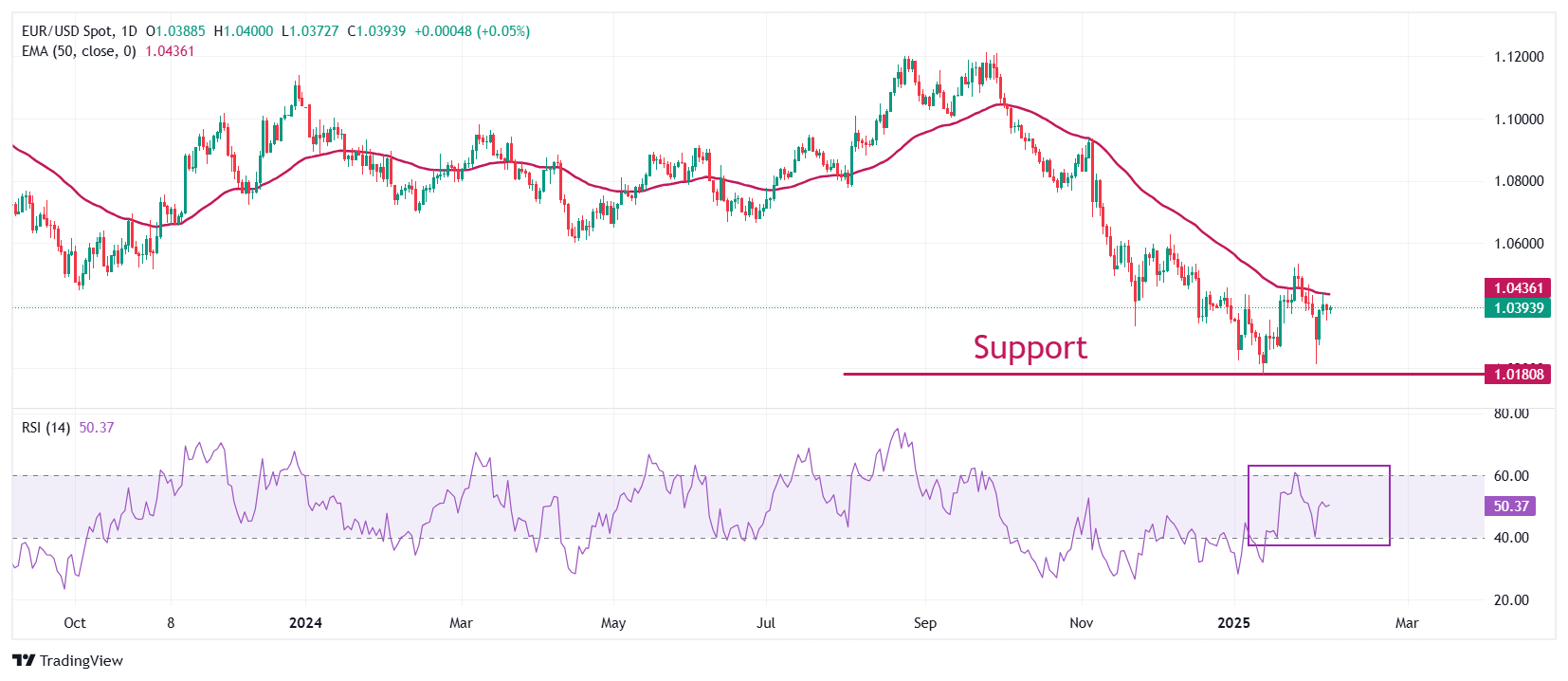Pound Sterling flattens against USD ahead of US NFP
- The Pound Sterling edges lower to near 1.2420 against the USD ahead of the US NFP data for January.
- Investors expect the US NFP to drive market expectations for the Fed’s monetary policy outlook.
- BoE’s Catherine Mann surprisingly supported a bigger interest rate reduction of 50 bps.
The Pound Sterling (GBP) ticks lower to near 1.2420 against the US Dollar (USD) in Friday’s European session ahead of the United States (US) Nonfarm Payrolls (NFP) data for January, which will be published at 13:30 GMT. The US Dollar Index (DXY), which tracks the Greenback’s value against six major currencies, ticks higher to near 107.80
Investors will pay close attention to the US official employment data, which is expected to influence market speculation about how long the Federal Reserve (Fed) will keep interest rates steady in the range of 4.25%-4.50%.
On Thursday, Dallas Fed Bank President Lorie Logan said she would support holding interest rates for “quite some time” until the “labor market doesn’t falter” even if inflationary pressures decelerate closer to the central bank’s target of 2%.
Last week, Fed Chair Jerome Powell also said that monetary policy adjustments won’t be appropriate until the central bank sees “real progress in inflation or at least some weakness in labor market”.
The US NFP report is expected to show that the economy added 170K workers in January, significantly lower than 256K in December. The Unemployment Rate is seen steady at 4.1%. Investors will also focus on the Average Hourly Earnings data, a key measure of wage growth that drives consumer spending. The wage growth measure is estimated to have decelerated to 3.8% year-on-year from 3.9% in December, with monthly figures growing steadily by 0.3%.
Meanwhile, the uncertainty over US President Donald Trump’s tariff agenda will also keep investors on their toes. Market participants expect President Trump to target Europe next for imposing tariffs.
Daily digest market movers: Pound Sterling trades with caution as BoE halves GDP forecasts
- The Pound Sterling trades cautiously against its major peers on Friday after a sharp sell-off on Thursday. Investors dumped the British currency the prior day after the Bank of England’s (BoE) policy meeting, in which the central bank reduced interest rates by 25 basis points (bps) to 4.5% and revised Gross Domestic Product (GDP) forecast for the year to 0.75%, lower from 1.5% projected in November.
- Investors had anticipated a 25 bps interest rate reduction, with an 8-1 vote split, but all officials supported easing the monetary policy further. However, the notable reason behind the sharp sell-off in the Pound Sterling was Monetary Policy Committee (MPC) member Catherine Mann, an outspoken hawk, joining official Swati Dhingra and favoring a bigger rate cut of 50 bps. This scenario indicated how much policymakers are concerned over the economic outlook.
- BoE Governor Andrew Bailey guided a cautious and gradual rate cut approach and warned that, due to higher energy prices, inflation could temporarily rise to near 3.7% in the third quarter of the year before falling back to the 2% path.
- BoE’s interest rate cut decision is expected to bring a big relief to the United Kingdom (UK) Chancellor of the Exchequer Rache Reeves, as it will stimulate economic growth. Still, downwardly revised GDP growth appears to be a wake-up call for her. Last week, Reeves was very optimistic about her economic plans, including a new runway at Heathrow Airport.



